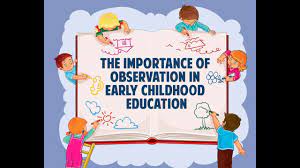Observation in early childhood. 2022 Best

This assignment observation in early childhood. Toddler Observation For this observation, you will observe a toddler in a play setting for about 40 minutes. Take careful notes on what you observe about the child’s physical, cognitive/language and social/ emotional development.
Observation in early childhood.
1: Toddler Observation For this observation, you will observe a toddler in a play setting for about 40 minutes. Take careful notes on what you observe about the child’s physical, cognitive/language and social/ emotional development. Notes should include what activities the child engages in, interactions with others, behavior, and communication. Avoid opinions, and simply write what you see and hear . Include the age and sex of the child , and a description of the place that you observed on the cover page. Summarize your findings, using developmental terms, as follows: 1. Summarize the toddler’s gross and fine motor skills. Give specific examples from your observation notes to back up your summary.
Observation in early childhood.
2. Summarize the toddler’s cognitive skills; refer to Piaget and Vygotsky: a. What activities does the child engage in? b. What toys does the child use? c. Give specific examples from your observation notes to back up your summary. 3. Summarize the toddler’s level of language development and proficiency, both in listening and speaking. Include examples of communication with adults and other children. Give specific examples from your observation notes to back up your summary. 4. Summarizes the toddler’s social skills and emotional development. What temperamental traits do you observe?
Observation in early childhood.
Give specific examples from your observation notes to back up your summary . For this observation, you will observe one child between the ages of 3-5 years of age. Plan to spend 45 minutes to an hour observing the children in a preschool or child care center. Record what you observe, describing what you see and hear without inserting your opinions. Use appropriate developmental terms from the text or class notes to support your responses. Include the age and gender of the child observed, and a description of the environment where you observed.
Observation in early childhood.
Final papers must: be typed, the entire document double spaced. include a cover page with the child’s name, age, gender and location of the observation (don’t forget to include your assignment heading). use Times New Roman, 12 pt. font size (points will be deducted if not used), The use of developmental terms and concepts from the text and class discussions is recommended to support your statement. Your paper should include the following information: Describe (what/how) the child’s physical development: gross and fine motor skills, coordination, level of activity. Cite specific examples from your observation notes
Observation in early childhood.
Describe some of the activities and materials you observe the child involved with or using. Describe what the child is learning (experimentation, investigation, sharing, learning patterns, etc.). Is the child learning through guided participation (Vygotsky) or simply his/her own experimentation (Piaget)? Give specific examples that support Vygotsky and/or Piaget, including evidence of egocentrism, centration, irreversibility, static reasoning, focus on appearance or conservation. Describe the child’s language development, using appropriate developmental terms. Describe the kinds of play the child is engaged in– solitary, cooperative, etc. https://youtu.be/8O5jP6GCxx0
Additional Files







